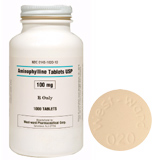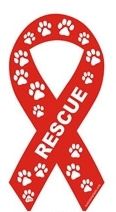Aminophylline Pet Medication

- Dog or Cat
- Availability: Prescription
- Active Ingredient(s):
- What is Aminophylline used for?
Aminophylline is used in the treatment of heart failure, pulmonary edema, bronchial asthma and chronic obstructive pulmonary disease (COPD).
- How Aminophylline should be used?
Aminophylline is not FDA approved for use in veterinary medicine; however, it is a commonly accepted practice to use this medication in dogs and cats. The usual dose in dogs is 3-5mg/pound every 8 hours. The usual dose in cats is 2.25mg/pound every 8-12 hours. Aminophylline should be taken on an empty stomach, 1 hour before or 2 hours after a meal.
- What are the side effects?
Side effects when using aminophylline include vomiting, diarrhea, central nervous system excitement, insomnia and increased hunger, thirst and urination. Side effects usually subside with dosage adjustments and/or continued therapy.
- What special precautions are there?
Aminophylline should not be used in animals allergic to this class of medication. Do not use in pregnant or lactating animals. Use caution when given to animals with seizure disorder, hypothyroidism, liver or kidney disease and congestive heart failure. Certain medications such as phenobarbital and phenytoin may decrease the effect of aminophylline. Certain medications such as cimetidine, erythromycin or quinolone antibiotics such as Orbax or Baytril may cause an increase in the effect of aminophylline. Use caution when given with beta blockers such as propranolol. Always tell your veterinarian and pharmacist what other medications your pet is taking.
- In the event of overdose?
Contact your veterinarian or veterinary emergency room. Symptoms of overdose, which may be fatal, include rapid heart rate, arrhythmias, seizures and fever.
- How should I store Aminophylline?
Keep this medication in the container it came in, tightly closed. Store this medication at room temperature away from excess heat, light and moisture. Do not store in the bathroom. Throw away any medication that is outdated or no longer needed. Keep out of the reach of children and pets.
Disclaimer: The information on this site is for educational purposes only and should NOT be considered veterinary advice. Any veterinary questions should be referred to your veterinarian. This information is NOT to be used for diagnosis or treatment of your pet. Please make your own inquiries with your veterinarian for the suitability of a product for your pet.




